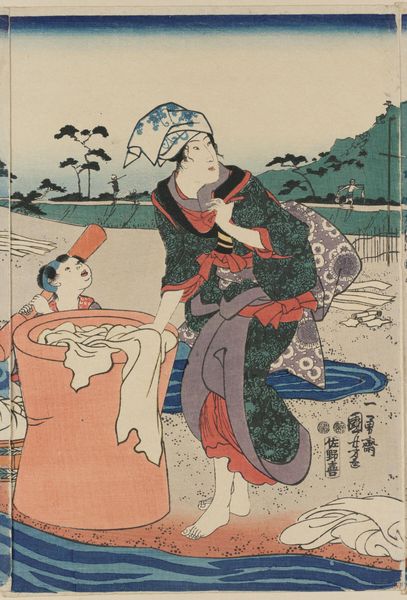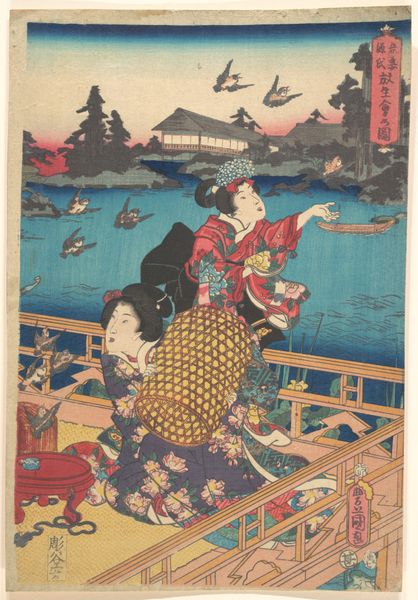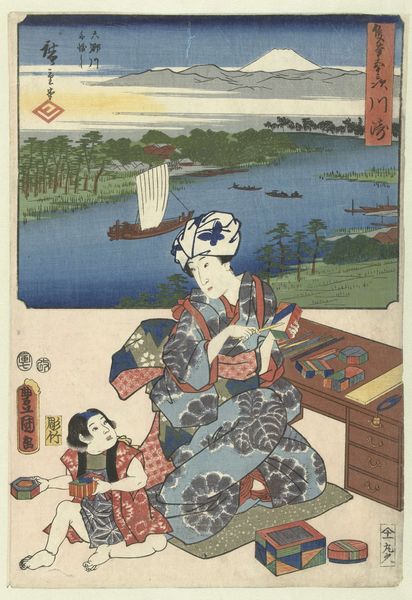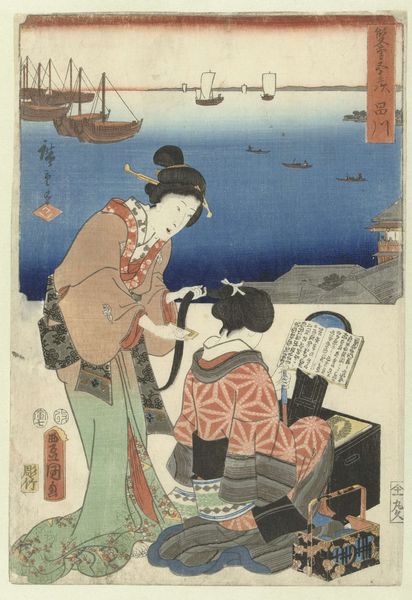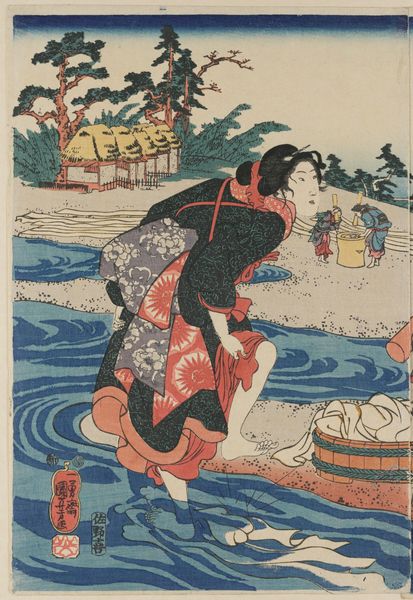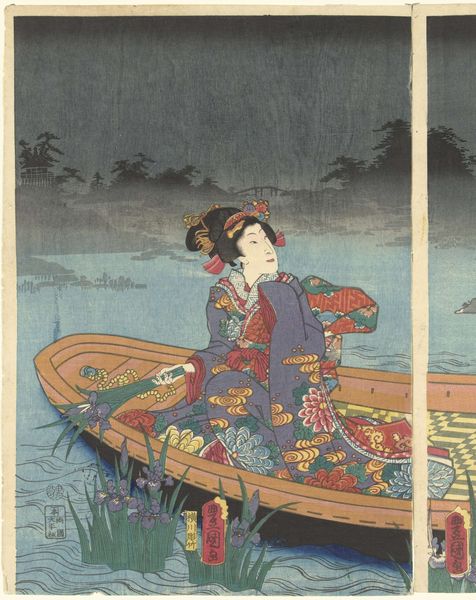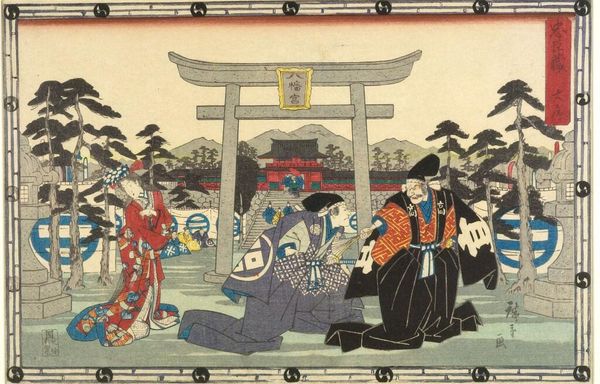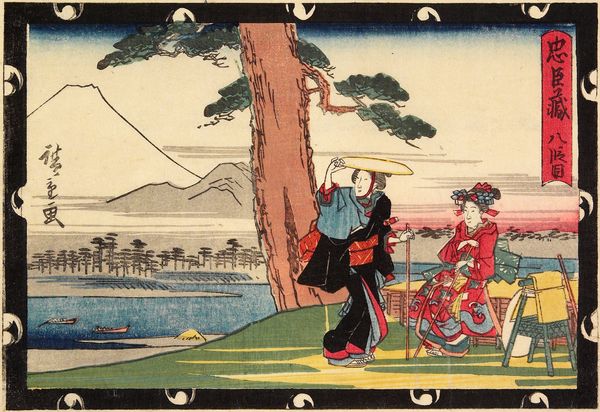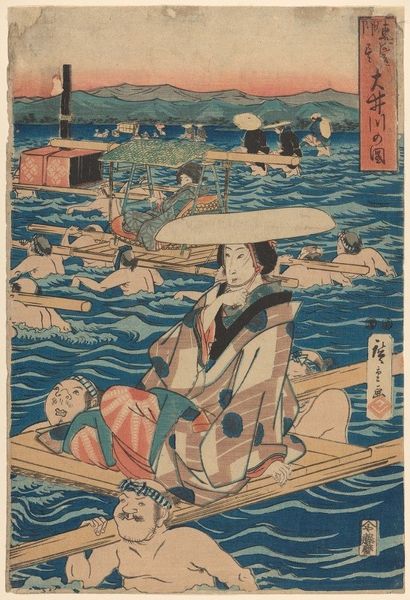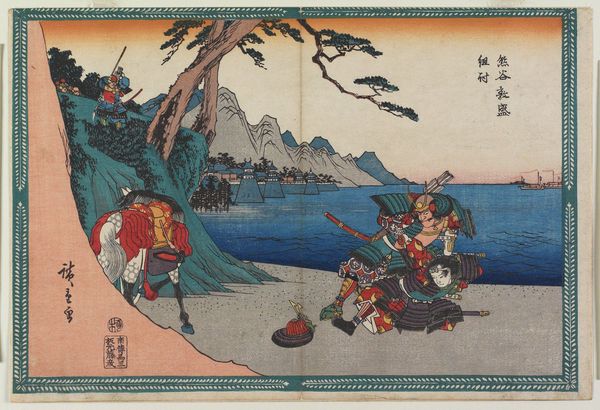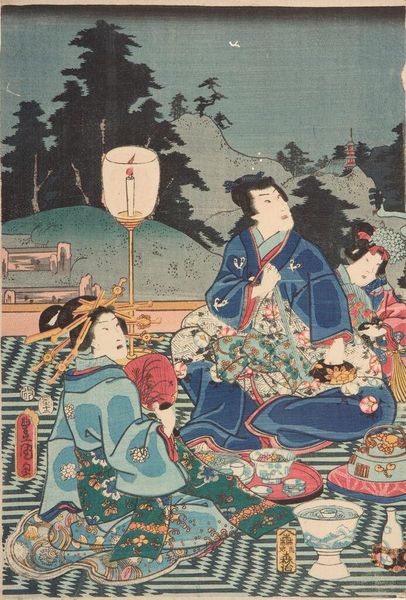
Triptych: Musashi no Kuni: ChÅfu no Tamagawa c. 1847 - 1852
0:00
0:00
Dimensions: 37.4 x 76.1 cm (14 3/4 x 29 15/16 in.)
Copyright: CC0 1.0
Curator: This triptych, attributed to Utagawa Kuniyoshi, depicts women washing cloth in Musashi Province. What catches your eye? Editor: The sheer labor depicted here is striking. Look at the scale of the cloth, the size of the vats—the materiality speaks to the intensive nature of textile production in this period. Curator: Indeed. The women are archetypes, embodying roles—mother, daughter, worker. Notice the child in the middle panel, reaching towards the fabric, a symbol of generational continuity in labor. Editor: But is it just about labor? The composition, the arrangement of figures, seems carefully constructed. The division of panels allows for a narrative of labor, yes, but also a rhythm of production. Curator: Absolutely, and the river itself, Tamagawa, gains iconic status. Rivers in ukiyo-e prints represent the flow of life, purity, and renewal. It is a place of cleansing both physical and spiritual. Editor: Seeing the labor so close to the river underscores the reliance on natural resources. The entire process is dependent on its immediate environment. Curator: By juxtaposing the mundane with the symbolic, Kuniyoshi elevates daily life into a cultural narrative about the place of women in Japanese society. Editor: It reminds us of the physical reality behind every piece of cloth. I appreciate the way Kuniyoshi made labor central to the composition.
Comments
No comments
Be the first to comment and join the conversation on the ultimate creative platform.
